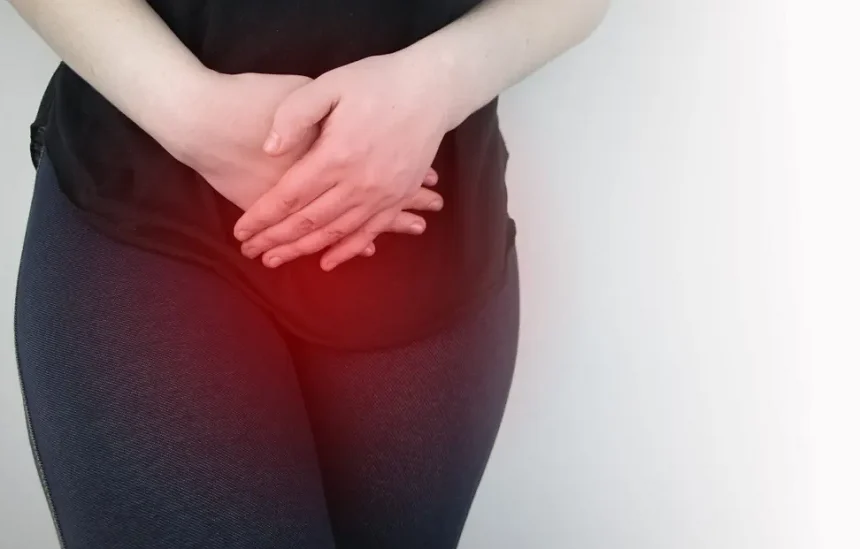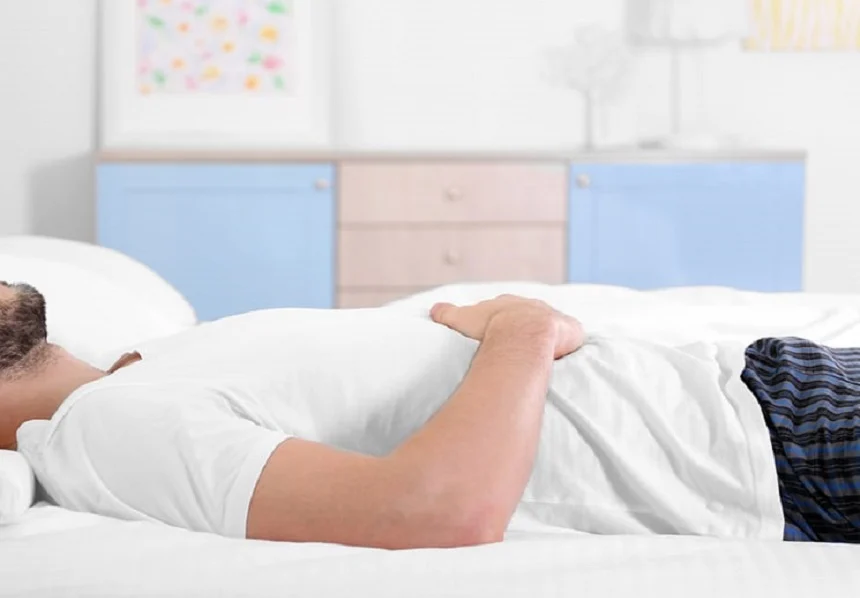A prolapsed bladder is usually associated with poor sleep. The symptoms of a prolapsed bladder can even affect your overall health.
So, are you having restless nights and searching for how to sleep with a prolapsed bladder? You’ve come to the right place. Specific lifestyle changes such as Kegels can help you sleep better, and specific sleeping positions can also help with the discomfort.
However, note that these remedies are highly dependent on the severity of the condition. If you suffer from a severely prolapsed bladder, surgery might be your only option to get a great night’s sleep. This article will further examine bladder prolapse, discuss remedies that help, and provide more helpful information.

Bladder prolapse is a condition where the bladder protrudes into the wall of the vagina. This condition is due to the weakening and stretching of pelvic floor muscles and vagina walls. Some of the risk factors of bladder prolapse include childbirth, pregnancy, and even intense gym sessions.
Furthermore, bladder prolapse can happen on its own or concurrently with another prolapse, like uterine prolapse (which arises when the uterus and cervix bulge into the vagina) and rectocele (which occurs when the bowel protrudes into the vagina wall).
Below are the causes of a prolapsed bladder that proved to be the most common:
Among other things that can cause damage to the pelvic floor muscles are having long-term constipation or coughing condition, lifting heavy objects, and straining during bowel movements.
The vast majority of patients with a prolapsed bladder are asymptomatic. This means that patients don’t exhibit any symptoms to suggest they have this condition. However, as the bulge extends past the vaginal opening, the symptoms worsen. Some of these symptoms include:
Bladder prolapse is classified into four stages based on the severity of the vaginal bulge.
Stage 1: A tiny bit of the bladder protrudes into the vagina.
Stage 2: The bladder slightly bulges into the vagina opening.
Stage 3: The bladder protrudes out of the vaginal opening.
Stage 4: The whole bladder protrudes out of the vagina.
Bladder prolapse can affect the quality of your sleep depending on its severity. A mild prolapse might not significantly affect your sleep; however, you might experience uncomfortable sensations. Moreover, bladder prolapse can be painful and lead to general body discomfort.
Furthermore, this condition causes urinary incontinence, which means more trips to the bathroom. Bladder prolapse can significantly affect your sleep if not properly managed. Endeavor to visit a specialist for treatment options. Your sleep is essential, so you need to safeguard it.
Bladder prolapse is a serious condition that can negatively impact the quality of life. There are conservative and surgical treatments to alleviate this condition. Speak to a doctor to discuss possible treatment options. Here’s how you can treat prolapsed bladder.
Conservative treatment is usually the first option for treating bladder prolapse. This treatment is safer, cheaper, and a less invasive alternative to surgery. Below are three forms of conservative treatment.
Women can naturally slow down or prevent prolapse by exercising their pelvic floor muscles. Strengthening them with the help of Kegel exercises helps control urination, as well as strengthen the pelvic area and the pelvic organs.
You can lean more about them from the video below.
Doctors usually prescribe Low-dose estrogen creams to help strengthen the connective tissue in this pelvis and slow down the protrusion of prolapsed bladder. Patients can use estrogen creams vaginally once a day for two weeks and three times the week after.
Another conservative treatment includes inserting a pessary device into the vagina. This rubber ring offers to support your bladder. Patients can use estrogen creams with a pessary device to reduce the risks of side effects, including vaginal discharge, odor, infection, irritation, bleeding, and infections. We recommend cleaning the pessary regularly.
Numerous women may have bladder prolapse but suffer from no symptoms. In stage 1 bladder prolapse, surgery isn’t required. However, asymptomatic or symptomatic women with stage 3 or 4 bladder prolapse may need surgery. Furthermore, reconstructive or obliterative surgery are forms of options available.
Obliterative surgery narrows the vaginal opening. This surgery supports the prolapsed bladder. However, women who undergo this surgery will be unable to have sex. Moreover, reconstructive surgery is classified into several types. The goal of these procedures is to restore your pelvic floor muscles and support the bladder.

A proper sleeping position can help relieve pain and release tension. Here are two of the best sleeping positions for people with a prolapsed bladder
Put a pillow between your knees. When used correctly, the pillow relieves lower back strain to keep the head and neck in a neutral position. We recommend using a pillow of the correct size. Furthermore, to avoid a neck or upper back pain caused by a flexed neck, avoid lying on your back with two wide pillows
Your preferred sleeping posture depends on your comfort and any other health concerns you may have. Lying on one’s side is an excellent position for lying down comfortably. However, lying on the wrong side will worsen lower hip, back, or pelvic pain. As a result, try sleeping on the side that you’re most comfortable with.
Consider placing pillows between your legs when lying on your side. This position will provide more comfort.
So, what can you do to sleep better? For one, you can take over-the-counter pain medication, such as Tylenol, ibuprofen, or naproxen, to relieve pain and help you sleep better. We recommend following your doctor’s instructions for the correct dose.
Furthermore, you can also sleep better by lying down with a pillow underneath your knees. This position relieves pressure from the pelvis and makes it easier to sleep off without an uncomfortable sensation.
Moreover, you can lie on your side and raise your knees to your chest. However, if none of these remedies work, you likely have severe bladder prolapse. Consider inserting a pessary device to help relieve pressure or undergo surgery to help position the bladder in the right place.
Avoiding heavy lifting or straining is the first thing a doctor may advise for mild or moderate stages of bladder prolapse. Another recommendation would be Kegel exercises that help tighten the pelvic floor muscles. These exercises can also supplement other treatments for more severe prolapses.
Furthermore, it would help if you didn’t lift objects weighing more than 5kg, including children. Also, avoid heavy weight training, sit-ups, and high-impact exercise daily to help keep your bowel movements regular.
We recommend increasing your daily fiber intake to 30g to prevent constipation. It is important to note that a single instance of straining can exacerbate bladder prolapse. So, ensure you abstain from overly strenuous activities.
Women who have a prolapsed bladder consider it a discomfort in their lives. So, are you wondering how to sleep with a prolapsed bladder? Fortunately, there are numerous treatment options available, including medications and addressing the underlying cause of the symptoms. Also, some lifestyle choices can help alleviate symptoms.